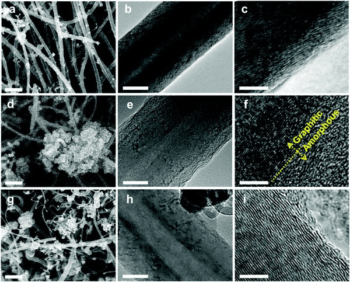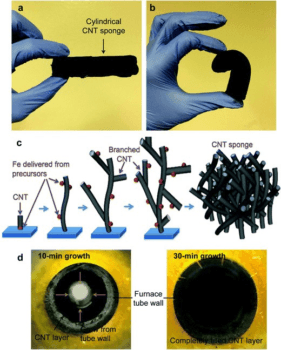Research Group Develops Low-Cost Bi-Functional Carbon Nanotube Sponges

Dr. Choongho Yu, the Gulf/Oil Thomas A. Dietz Career Development Professor II in the Department of Mechanical Engineering at Texas A&M University, and his group in mechanical engineering and materials science and engineering have recently published a paper in the journal Energy & Environmental Science.
Yu’s paper, “Scalable synthesis of bi-functional high-performance carbon nanotube sponge catalysts and electrodes with optimum C–N–Fe coordination for oxygen reduction reaction,” focuses on developing new non-precious metal based catalysts as alternatives to the bench mark Pt-based catalysts for the sluggish oxygen reduction reaction in various electrochemical systems such as proton exchange membrane fuel cells (PEMFCs).

One of the major roadblocks in commercializing electrochemical cells is the high cost of Pt-based catalysts. In the past few years, efforts have been devoted to develop or find low-cost alternatives, but most of them fail to show comparable long-term stability, especially in acidic environments. In addition, as Pt-based catalysts, almost all of them are powders, limiting catalyst loading and requiring an additional gas diffusion layer.
Yu and his Ph.D. students, Gang Yang, Woongchul Choi and Xiong Pu, have developed a new low-cost and scalable method to synthesize 3-D sponge-like carbon nanotubes, which are self-standing and highly porous. After post-treatment, striking catalytic activity and stability are found to be comparable to or better than those of Pt-based catalysts in both acidic and basic environments. More importantly, by eliminating the precious metal and gas diffusion layer, the cost of this catalyst is only 1/50 of Pt-based catalysts, which would help to commercialize current lab-based electrochemical cells as well as reduce the cost of the commercial fuel cell stacks.
Media contact: tamunews@tamu.edu.





